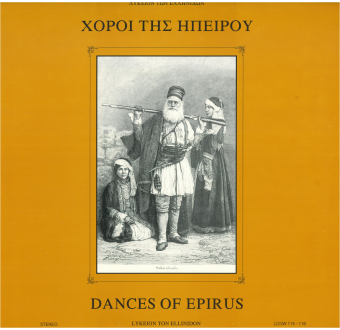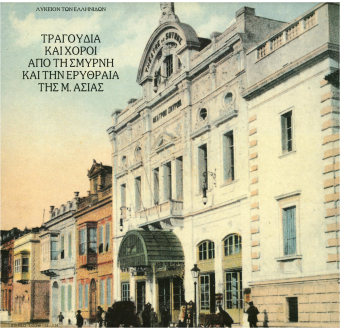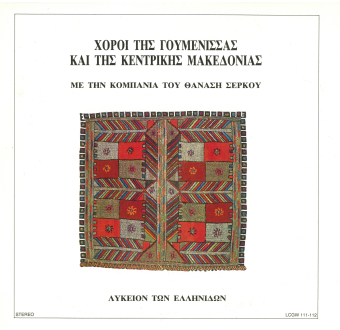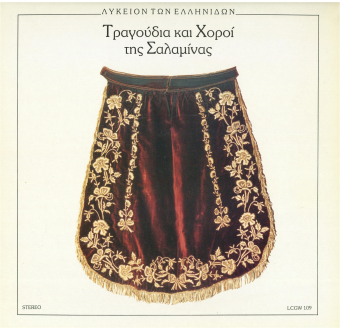
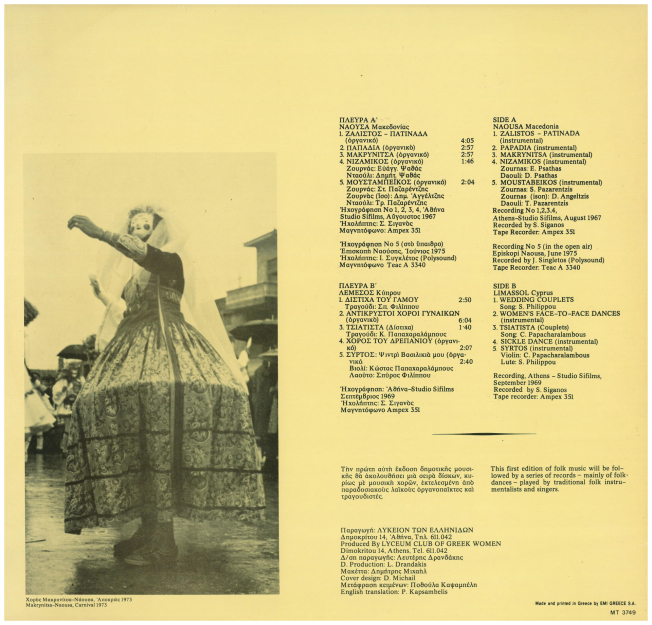
The folk song of Greece is modal and monophonic. That is to say, its melodies are based on a different sequence of intervals from that of the major and minor scales used in western music and are played without harmonic accompaniment.
Certain popular songs of more recent origin: the “cantada” of the Ionian islands, or the Athenian “cantada”, which are written in the major or minor scale and usually have a simple harmonic accompaniment, are an exception to the rule, as are certain songs of Northern Epirus, which are also sung polyphonically. Rhythmically, Greek folk songs are divided into a) melodies of a periodic rhythmical type, i.e. a periodic repetition of a rhythmic form, as in all melodies meant to be danced, and b) melodies of a free melodic type, i.e. a free flow of various rhythmic forms, as in the “table” songs etc. In the periodic type melodies we find simple rhythms: 2/4, 3/4, etc., as well as the so-called “aksak” rhythms: 5/8, 7/8, 9/8, etc. (aksak = lame).
The main musical instruments used are:
Idiophones: zilia (cymbals), the triangle, masá (tongs), handclapping, etc.
Membranophones: daouli (drum), toumbi (a sort of small daouli), defi, toumbeleki (an earthenware pot with a skin stretched over the top), etc.
Aerophones: various pastoral pipes: floghera, souravli, madoura, zournás - also called pipiza or karamouza - bagpipes: tsambouna or gaida, clarinet.
Cordophones: tamboura, lute, pear-shaped lira, bottle-shaped lira (the kementjés of the Greeks of Pontos), qanun (psalterium), sandouri (dulcimer) and violin.
The instrumental ensembles best known throughout Greece are the zygia (from zygos-two instruments), i.e. one or two zournás and a daouli -encountered in continental Greece; the island zygia violin and lute, and the compania, composed of clarinet, violin, lute and sandouri, which form is gradually replacing the zygiá combination of zournás-daouli. Let us note here that, wherever the singers or players have not been influenced by western music, the Greek folk song is played and sung in the natural scale and not in the equal-tempered scale of the west.
The Greek folk dances, accompanied either by singing or by the various instruments mentioned above, are divided into two large groups: the pidichtoi (hopping or leaping dances) and the syrtoi (drawn dances). The first group of dances, at once severe and spirited, are danced mainly by men, while the dances of the “syrtos” type, calmer and more lyrical in movement, are very often performed by women, as well. A third category consists of composite dances, combining the pidichtos and syrtos characteristics. According to the number of dancers and to the way in which the dances are performed, we have group dances, which are usually circular in formation - such as the kalamatianos -, face-to-face dances (andikrystoi), performed by couples in contra formation - such as the island ballos, and dances, - such as the sickle dance of Cyprus, etc.
Fivos Anoyanakis
Side A - Naousa Macedonia
1. Zalistos – Patinada (Instrumental) 4:05
2. Papadia (Instrumental) 2:57
3. Makrynitsa (Instrumental) 2:57
4. Nizamikos (Instrumental) 1:46
Zournas: E. Psathas
Daouli: D. Psathas
5. Moustabeikos (Instrumental) 2:04
Zournas: S. Pazarentzis
Zournas (ison): D. Angeltzis
Daouli: T. Pazarentzis
Side B - Limassol Cyprus
1. Wedding Couplets 2:50
Song: S. Philippou
2. Women's face-to-face dances (Instrumental) 6:04
3. Tsiatista (Couplets) 1:40
Song: C. Papacharalambous
4. Sickle dance (Instrumental) 2:07
5. Syrtos (Instrumental) 2:40
Violin: C. Papacharalambous
Lute: S. Philippou
Naousa Macedonia
Zournas: E. Psathas
Daouli: D. Psathas
Zournas: S. Pazarentzis
Zournas (ison): D. Angeltzis
Daouli: T. Pazarentzis
Limassol Cyprus
Song: S. Philippou
Song: C. Papacharalambous
Violin: C. Papacharalambous
Lute: S. Philippou
Naousa Macedonia
1. Recording Νο. 1,2,3,4: Athens, Studio Sifilms, August 1967
Tape Recorder: Ampex 351
Recorded by: S. Siganos
2. Recording Νο. 5: (in the open air), Episkopi Naousa, June 1975
Tape recorder: Teac A 3340
Recorded by: J. Singletos (Polysound)
Limassol Cyprus
Recording: Athens, Studio Sifilms, September 1969
Tape Recorder: Ampex 351
Recorded by: S. Siganos




